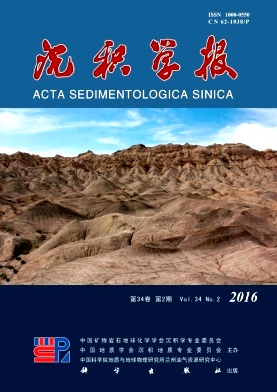Architecture Characterization For Sandy Braided River Reservoir and Controlling Factors of Remaining Oil Distribution-A case study of P oilfield (Neogene), Bohai offshore, China
doi: 10.14027/j.cnki.cjxb.2016.02.016
- Received Date: 2015-03-07
- Rev Recd Date: 2015-07-14
- Publish Date: 2016-04-10
-
Key words:
- braided river /
- architecture character /
- modern sedimentary /
- outcrop /
- stacking pattern /
- remaining oil
Abstract: The architecture of braided river, especially the muddy intercalation, plays a key role in the enhancement of remaining oil. Based on the outcrop, modern sediments and underground reservoir, taken P oilfield as an example, the different level of the internal architecture elements are studied in order to obtain a qualitative and quantitative distribution pattern of the heterogeneity character of the sandy braided river reservoir. Also, the architecture characterization technique for underground braided river reservoir is studied in this work. Based on the proposed distribution pattern and the related characterization techniques, the different control of architecture element to the distribution of remaining oil is analyzed:① the sandy braided rivers have three filling types, dominated by sandy fillings. The distribution styles of channel bars and braided rivers display "wide bar-narrow channel". The sludge beds within channel bars show two distribution styles as dome-like and horizon-like. ② architectures from 5 to 3 hierarchies are characterized successively. Based on three identification marks, single braded belts are characterized with width of 800~1200 m, thickness of 3~8 m and average width/thickness ratio about 178. Channel bars are characterized by principles of thickness-controlled, scale-constraint and multidimensional interaction. The width ratio of braided rivers and channel bars is about 1:3.8, and width/length ratio of channel bars is about 1:2.2. Single periodic sludge bed within channel bars are horizontally distributed and different periodic sludge beds are parallel with each other. The distribution range of sludge beds from bottom up decreases from bar head to bar tail. The quantity of sludge beds within channel bars are generally low (about 2~4). ③ reservoir architectures of different hierarchies exert different controls on the distribution of remaining oil. The interlayers control the remaining oil directly in the hierarchy of braided river belts. In the hierarchy of channel bars, the sandbodies are connected at the bottom of muddy semi-filling channels, resulting in relatively poor water flooding degree and enriched remaining oil in the upper part. Influenced by sludge beds and petrophysical boundaries, the remaining oil within in channel bars is mainly distributed as "segment-like" at the top of aggraded bodies under the sludge beds and the margin part with poor water flooding. This research has been applied in the optimization of water injection and deployment of wells of oilfields.
| Citation: | XU ZhongBo, SHEN ChunSheng, CHEN YuKun, KANG Kai, LUO XianBo, HE XinRong, LI Lin, ZHANG BoWen. Architecture Characterization For Sandy Braided River Reservoir and Controlling Factors of Remaining Oil Distribution-A case study of P oilfield (Neogene), Bohai offshore, China[J]. Acta Sedimentologica Sinica, 2016, 34(2): 375-385. doi: 10.14027/j.cnki.cjxb.2016.02.016 |






 DownLoad:
DownLoad: